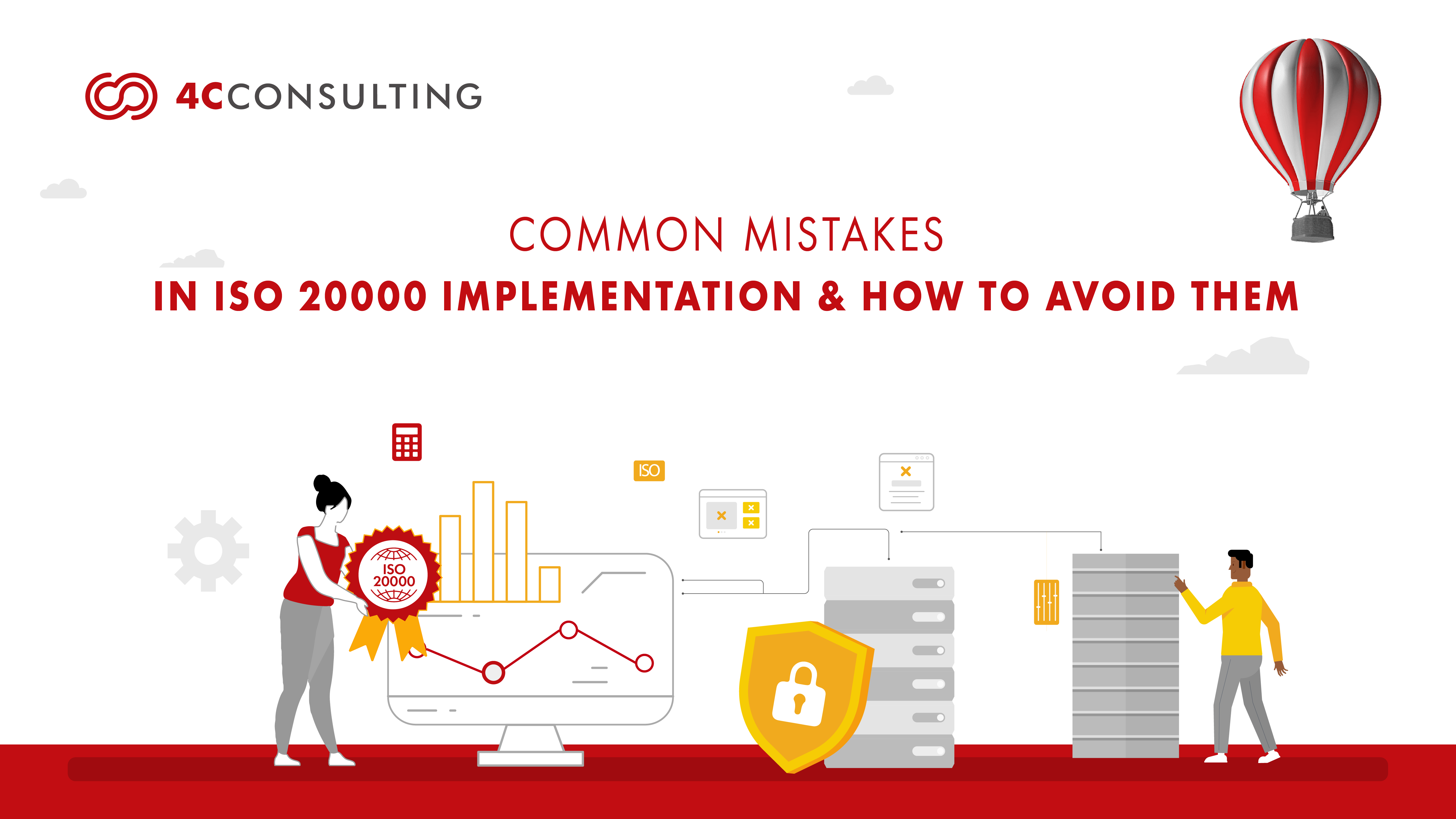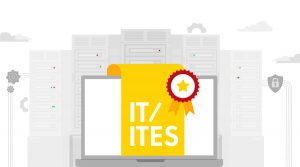COMMON MISTAKES IN ISO 20000 IMPLEMENTATION & HOW TO AVOID THEM
15th Sep, 2025A global survey revealed that 91% of enterprises lose over $300,000 for every single hour of IT downtime with nearly half reporting losses exceeding $1 million. In banking, downtime halts transactions and reduces investor confidence. In healthcare, it disrupts access to critical patient records. In telecom, it causes outages that damage brand reputation within hours. Manufacturing plants face stalled production, e-commerce firms lose digital sales and logistics companies encounter supply chain breakdowns. Service reliability is no longer just a technical matter it is a board-level concern that directly shapes business continuity, customer trust and market resilience. To manage this risk many organizations are turning to ISO 20000 certification the international benchmark for IT Service Management (ITSM).
When implemented effectively, this certification shifts IT from being a cost-driven support role to becoming a catalyst for business continuity, stakeholder confidence and competitive strength. Yet many organizations fall into common ISO 20000 mistakes treating certification as paperwork, overlooking supplier performance or rushing audits before systems mature. Such missteps lead to wasted resources, compliance failures and fragile IT service structures. In this guide, we highlight the most frequent ISO 20000 implementation pitfalls and show how they can be avoided through structured standards, disciplined audits and robust IT service management practices.
.
WHAT IS ISO 20000
ISO 20000 certification standards are international standard for IT Service Management (ITSM). It offers a structured, globally accepted framework for planning, delivering, monitoring and continually improving IT services. Rather than approaching IT as separate functions, ISO 20000 defines it as an integrated service management system designed to support organizational goals consistently.
Built on core principles of service quality, reliability and continual improvement, certification ensures IT is aligned with business continuity, customer satisfaction and regulatory requirements. Organizations that implement it gain discipline, predictability and transparency turning IT from a cost centre into a strategic driver of sustainable growth.
.
Struggling to Meet ISO 20000 Compliance Requirements?
.
Key Reasons to implement ISO 20000 are:
- Service Reliability & Continuity: Builds processes that ensure IT services are dependable, resilient and capable of minimizing downtime. This is critical for industries like banking, telecom and healthcare where every minute of disruption impacts revenue and trust.
- Standardized ITSM Framework: Provides globally recognized best practices for IT service delivery, including incident management, problem management and change management. This standardization eliminates fragmented practices and fosters cross-departmental collaboration
- Business Alignment: Shifts IT from being a cost centre to a value driver. With ISO 20000, IT services are mapped directly to business goals enabling organizations to support strategy, customer requirements and long-term competitiveness.
- Regulatory & Compliance Support: Helps organizations meet contractual obligations, legal requirements and governance frameworks. In regulated industries the ISO 20000 certification documents become proof of accountability in audits and client assessments.
- Risk-Based Approach: Introduces proactive risk identification and service continuity planning, ensuring organizations can anticipate, mitigate and respond to IT disruptions effectively.
- Customer & Stakeholder Trust: Certification demonstrates a commitment to quality and reliability. Clients, partners and regulators gain confidence knowing that IT services follow a proven international framework.
By adopting ISO 20000 frameworks organizations establish a service oriented culture where IT is predictable, measurable and aligned with business priorities.
.
COMMON MISTAKES IN ISO 20000 IMPLEMENTATION HOW TO AVOID THEM
| COMMON MISTAKES IN ISO 20000 IMPLEMENTATION HOW TO AVOID THEM |
| Common Mistakes | Causes | How To Avoid Them |
| Treating ISO 20000 as paperwork | Policies exist only on paper; when outages hit, teams are unprepared longer downtime, lost revenue and shaken client trust. | Build live ITSM workflows (incident, change, problem management) that are practiced daily. |
| Weak top management support | If leaders treat it as “IT’s job,” budgets, resources and authority are missing certification fails and services remain fragile. | Secure executive sponsorship and link ITSM KPIs directly to business impact. |
| Ignoring ITIL alignment | Lack of alignment creates duplication, delays and inconsistent customer experience. | Map ISO 20000 with ITIL best practices to streamline service delivery. |
| Lack of risk-based thinking | Unassessed risks (vendor failure, outages) cause costly service disruptions. | Maintain risk registers, continuity plans and run resilience tests. |
| Inadequate internal audits | Gaps remain hidden until external audit failed certification and reputational hit. | Run mock audits and leadership-driven management reviews before certification. |
| Poor staff awareness & training | Staff don’t know escalation routes SLA breaches, slow recovery and customer dissatisfaction. | Provide clear, role-based ISO 20000 awareness training across to internal audits. |
| Vendor & third-party mismanagement | Outsourced providers create blind spots in SLAs service failures beyond IT control. | Extend ISO 20000 coverage to suppliers and enforce contracts. |
| Rushing certification without maturity | Early push leads to failed audits and wasted investment. | Begin with a gap analysis, then adopt a phased rollout plan. |
| Weak KPI measurement | Without metrics, IT’s value is invisible leadership questions ROI. | Track measurable KPIs like uptime %, resolution times, SLA compliance. |
| Treating certification as the finish line | Processes stagnate, leading to nonconformities and slipping service quality. | Integrating ISO 20000 as a cycle of continual service improvement. |
| Lack of integration with ISO 27001 | IT services run but without strong security leaving data and compliance gaps. | Integrate ISO 20000 with ISO 27001 for a complete service-security model. |
| Underestimating cultural change | Teams resist new practices old habits return, reducing effectiveness. | Build a culture of service excellence with structured change management |
.
BENEFITS OF ISO 20000 IMPLEMENTATION
- Measurable Service Performance: ISO 20000 implementation establishes defined KPIs, SLAs and monitoring mechanisms for IT services. This transparency allows organizations to assess performance objectively, identify deviations early and take corrective action. With reliable data available, decision-making shifts from reactive guesswork to evidence-based strategy. Over time, this builds a culture of accountability and continuous service improvement.
- Cost Optimization: A structured ITSM framework eliminates inefficiencies such as redundant workflows, duplicated tasks and unmanaged resources. By standardizing processes and leveraging automation where possible, organizations achieve leaner operations and reduce unnecessary costs. Importantly, these savings do not compromise service quality or security. Instead, they release capacity that can be reinvested in innovation and growth initiatives.
- Integrated Supplier Oversight: In most organizations, IT services rely heavily on third-party providers and outsourcing partners. ISO 20000 introduces formalized supplier evaluation, performance monitoring and escalation pathways. This creates transparency in external service delivery and ensures vendors meet agreed service levels. As a result, organizations achieve consistent quality across the supply chain and minimize risks tied to external dependencies.
- Audit and Certification Readiness: ISO 20000 requires organizations to maintain documented evidence of processes, controls and service outcomes. This makes internal governance stronger and external audits more straightforward. Instead of scrambling to gather proof during client reviews or ISO 20000 certification audits, organizations already operate with compliance built into daily workflows. This reduces audit fatigue and enhances stakeholder confidence in operational maturity.
- Employee Empowerment: Implementation goes beyond processes it provides employees with clear roles, responsibilities, and escalation procedures. Structured ISO 20000 awareness programs and ISO 20000 internal auditor training equip staff with the skills to handle issues confidently and align daily operations with ITSM best practices. With standardized workflows and transparent expectations, teams collaborate more effectively. This empowerment not only boosts morale but also helps retain skilled talent in competitive industries.
- Sustained Competitive Advantage: ISO 20000 integrates resilience and adaptability within IT operations. Organizations are better positioned to scale services, adopt new technologies and respond to market shifts without destabilizing core functions. With governance, efficiency and reliability in place, IT transforms from a cost centre into a strategic partner. This capability provides a long-term edge in markets where operational stability directly determines growth opportunities.
ISO 20000 is far more than an IT checklist it is a business resilience framework, when championed by top management, turns IT into a driver of uptime, client trust and sustainable growth by avoiding common mistakes and embracing it as a cycle of continual improvement, organizations can prevent wasted investments, strengthen risk management and ensure services remain reliable, secure and aligned with strategic business goals.
.
How 4C Consulting Helps You Implement ISO 20000 Certification?
At 4C Consulting, we simplify ISO 20000 implementation by combining 15+ years of ITSM expertise, 10,000+ training hours and 50+ workshops into a structured, end-to-end approach. From conducting gap assessments and aligning your IT Service Management (ITSM) processes with ISO 20000 and ITIL best practices, to preparing audit-ready documentation, KPI dashboards and running mock audits, our experts ensure your team is fully equipped to achieve certification with confidence. Partnering with 4C means stronger governance, reduced downtime and a culture where reliable IT services become a strategic driver of business growth. Book your free ISO 20000 Gap Analysis today.

Frequently Asked Questions:
Implementation typically takes 4–6 months, depending on your organization’s size, ITSM maturity and the readiness of processes for audits.
Yes. ISO 20000 (IT Service Management) integrates seamlessly with ISO 27001 (Information Security Management), ensuring both service reliability and data security under a unified framework.
The cost depends on factors such as scope, company size and current ITSM maturity. It generally includes consulting, training, documentation and certification body audit fees.
ISO 20000 focuses on IT Service Management (ITSM), ensuring reliable delivery of IT services, while ISO 27001 focuses on information security, protecting data and managing risks.
ISO 20000 is a certifiable international standard, while ITIL is a best-practice framework. Aligning ITIL processes with ISO 20000 helps organizations achieve certification.
ISO 20000 is ideal for IT companies, telecom, BFSI, healthcare, government, BPOs and any organization that relies on uninterrupted IT services.
ISO 20000 covers the end-to-end IT Service Management lifecycle, including incident, change, problem, capacity, continuity and supplier management, ensuring reliable and efficient IT services.




